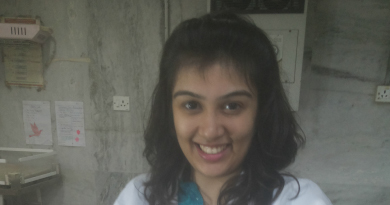How to get a research internship

Research is at the heart of every discipline of science. It can be done on any topic, be it physics, chemistry, biomedical, mathematics or anything else. Innovating things through research requires a lot of skills like problem-solving, observation, and analysis. And to develop these skills, research internships are crucial. It is an opportunity for students to do something original and unique. Let’s find out everything about research internships.
What is research internship?
A research internship is usually undertaken in the final year of graduation or post-graduation. At the core of most research internships is a research project of your own. While working on it, you learn new scientific techniques, design experiments, analyse results, and formulate the different hypotheses. You work closely with a supervisor or a professor who guides you. As an intern, you attend lab meetings, symposiums, and classroom lectures. You will work closely with scientists and will get an opportunity to demonstrate your own scientific insight. Most science and research organisations offer internships as a form of work experience or as a partial fulfilment of the degree.
How is research internship different?
Research internship opportunities may be in a laboratory of college, a research institute, or a company’s R&D department. Unlike company internships, there are no fixed office hours and the classroom knowledge is often directly implemented to the projects. It helps you get a perspective on the current on-going research and helps you decide if you wish to pursue higher studies or work.
When it can be done?
Research internships are generally pursued in the last semester of B.Tech, B.Sc., M.Tech, or M.Sc. as thesis projects. Students interested in pursuing their research internships in IITs and IISc should ideally start applying in the month of October to December. Although you can send out applications all year long, for foreign internships, the best time for sending out your applications is before May for summer internships and fall internships, and before September for winter.
What makes it special?
For the students aiming to continue their studies by pursuing masters, doing a research internship is considered more helpful. The two major benefits for such students are –
a. Letter of Recommendation – You will build contacts with the professors who are pioneers in their respective fields. Apart from the experience and knowledge that you will gain, they can write a good recommendation letter for your applications. A recommendation is considered very valuable while applying for internships and post-graduation.
b. Publishing Research paper – Once you successfully complete your project, you have an opportunity to publish your research paper. One of the major benefits of pursuing research internships is the opportunity to publish a research paper. This will also boost your resume while applying for MS.
How to get a research internship?
I. Networking – Reach out to people in the field that you’re interested in. Attend seminars, symposiums, workshops etc. where you will meet new people with similar interests who can help you connect with professors and will also help you have a clearer picture of the field.
II. Through internship programs:
For students interested in international internships, the program like German Academic Exchange Service (DAAD), AIESEC, and Nanyang Technological University (NTU), Singapore–India Connect target Indian students pursuing a degree in the fields of science and engineering who wish to do an internship at an educational institution or at a research institute. The best place to start looking up research internships is scholarship database. Every scholarship here is laid out with the basic requirements, the value of the scholarship, and how to apply. To make the process of finding research internships easier, EduInfo, Researchx, and other such websites are helpful in finding research internship listings.
Some of the best Indian research internships offered are Raman Research Institute Bangalore, Summer Research Fellowship Programme, Jawaharlal Nehru Centre for Advanced Scientific Research (JNCASR), Summer Student Programme, Institute of Mathematical Sciences, Chennai, for Mathematics, Physics and Theoretical Computer Science, Summer Undergraduate Research Grant for Excellence (SURGE) program IIT Kanpur, and CSIR-National Metallurgical Laboratory (CSIR-NML).
III. Through emailing individual professors:
Go through official pages of the laboratories and read about the professor’s latest work, lab manuals, and use their research papers to know their area of work. See how your interests are aligned with their work. It helps if you have already worked in some of the areas that they are working in.
How to approach – The internship cover letter should focus more on what you want to do, rather than what you’ve done. First, start by introducing yourself, and state the position for which you are applying. Next, give background information on what you’re currently studying as well as your intentions towards a career in that particular field. Add any relevant experience that you have in that domain.
Use a small paragraph to talk about what you hope to do with the experience you’ve gained during your internship and discuss how an internship with that particular professor can help you reach your goals.
Finally, close your internship cover letter by providing your contact information in addition to your desire to work and learn from the professor through an internship opportunity.
Following is one such example of email –
Respected Sir,
I am a student of School of Bio-Sciences and Technology, VIT University, Vellore pursuing M.Sc. Biotechnology (II Year). My major interest area involves Oncology and Genomics-Proteomics. and it’s my dream to work in this field. I have previous experience of doing research on Oral cancer and in the detection of cancer in the early stages using LASERs.
I am writing to you to inquire about the possibility of an M.Sc. project student position (December 2014 – April 2015) as a partial fulfillment for the award of M.Sc. degree, under your esteemed guidance.
Presently, I’m working with my research group on Anti-cancer effects of Oryxylum indicum against 4-Nitroquinoline 1-Oxide induced carcinogenesis- In vivo study
Recently, I finished my research group on “Neuroprotective effect of herbal formulations against Methyl Mercury induced neurotoxicity- In vivo study” at VIT University, and our research paper is going to be published in the journal “BMC Complementary and Alternative Medicine”.
I studied about your research areas through the institute’s website, and I’m really interested in working for the cancer research and related fields. I also read your recently published research paper on ‘Role of Stimulants in the Cancer Research’ and found the concept really intriguing. I shall be highly grateful if you consider my request for working under your guidance.
I’m attaching a brief resume with this email.
Yours Sincerely,
Manish Jain,
VIT University
+91- 999332****
Tips:
a. Research well about cover letters- To get a better idea and more tips and tricks to write a perfect cover letter for research internships, check out the art of emailing professors.
b. Read Journals- Nature, IOPscience, Sciencemag, Chemical Science, and Life Sciences publish articles across a wide range of scientific fields. Reading these will help you to keep yourself updated with the happenings in the field.
c. Do some projects yourself- It is going to help you understand the research work better and will be an addition to your resume while applying for research work under the professor. For example, a project in theoretical physics will help you secure a good research internship in that particular field.
d. Get used to failures- Failure is a part of science. Experiments often fail, even if you executed everything perfectly. Use your failed experiments to improve your work.
To start off on the right foot and bag a good research internship, apply to these research internships and start your journey of towards innovating new things.
Pic courtesy: http://www.enaindia.in



